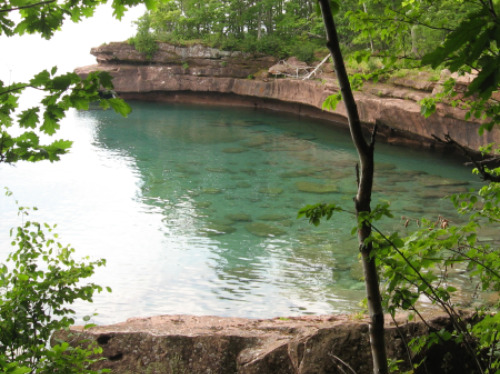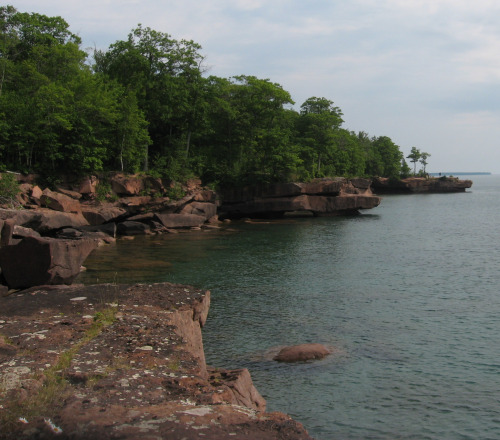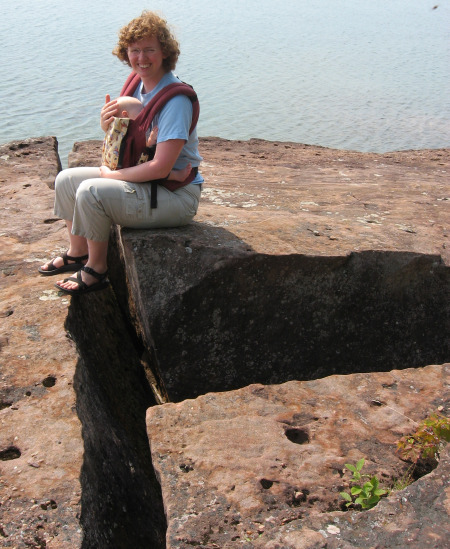[a post by Anne Jefferson]
If you ask my mom how I got started in geology, she’d tell you that it began with her taking 3-year-old me to see landslides coming off steep hillslopes during the spring thaw. That makes a nice story, but its not the real reason I got sucked into geology. Truth be told, I picked geology because it was the field of science my parents knew nothing about.
In my hometown public school system, the smart kids were herded towards doing in-depth middle school science fair projects. There was a wonderful teacher who helped us find projects and mentors, and taught us the art of visual displays and public teaching. As the child of two scientists, I was a natural fit for the program. There was only one problem: I didn’t want to do anything with which my parents could help. That was my mild form of early teenage rebellion. With my parents’ expertise in biology, chemistry and computer science, I felt I only had one choice: physics. But physics had too much math for my taste. (Little did I know just how mathy geology can be.)
Then a family friend suggested a geology project, I took it and ran with it, and the rest is history. My family friend was a resident of the Bayfield Peninsula, which juts up into Lake Superior from northern Wisconsin. Our friend was a sailor and nature enthusiast, and he pointed out that all of the rock cliffs along the lakeshore had right-angle fractures. He wanted to know why.

Figure 1. Shoreline at Big Bay State Park, Madeline Island, Wisconsin. Photo by Anne Jefferson, July 2007.
That question was the inspiration for my first real science fair project was “Fracture characteristics and geologic history of the Chequamegon Sandstone (Bayfield Group, Late Precambrian).” I collected dozens of stones from the rocky beaches of Madeline Island, where the Chequamegon Sandstone is exposed. I measured the angles between all sides of the stones, and tried to correlate them with grain size, induration and other characteristics. I made my first and last thin sections and I sieved samples using the same sort of Ro-Tap machine I now teach students to use. I also learned about things like properties of non-crystalline materials, the North American Mid-continental rift sytem, paleocurrents, and Pleistocene glaciations.

Figure 2. More shoreline made of Chequamegon Sandstone in Big Bay State Park, Madeline Island, Wisconsin. Glacial scour marks are visible on some of the rock surfaces. Photo by Anne Jefferson, July 2007.
I don’t think my conclusions were particularly startling to people who knew anything about rocks. The rocks generally broke along their bed planes, and then at 90 degrees from their bedding, with more than 50% of the rocks exhibiting fractures between 80 and 100 degrees from bedding. Secondary modes were 60 and 120 degrees from bedding. More tightly indurated rocks had a higher propensity to have obtuse fracture angles.

Figure 3. The young scientist at work. Photo by Carol Jefferson, August 1991.
That first project led to a second project, a year later: “Strength, porosity and fractures in the Chequamegon, Mount Simon, and Eau Claire Formations,” in which I contrasted the material properties of two building stones and an aquifer. Then the Mississippi River floods of 1993 pretty permanently steered my interest from ancient rocks and materials properties towards the more dynamic modern landscape. I’ve never again worked on rocks within an order of magnitude as old as my first rocks, and these days I’m more apt to think about the water flowing over and through rocks than the rocks themselves. But sometimes I’m in the field, and my eyes will be drawn to an outcrop, boulder, or piece of float. And I still find myself silently inspired by the amount of geologic history that rock has experienced to end up in the stream bed, hillslope or lakeshore obeying simple laws of physics.

Figure 4. The adult scientist still inspired by those perpendicular joints in the Chequamegon Sandstone at Big Bay State Park, Madeline Island, Wisconsin. Photo by James Jefferson Jarvis, July 2007.



Comments (6)